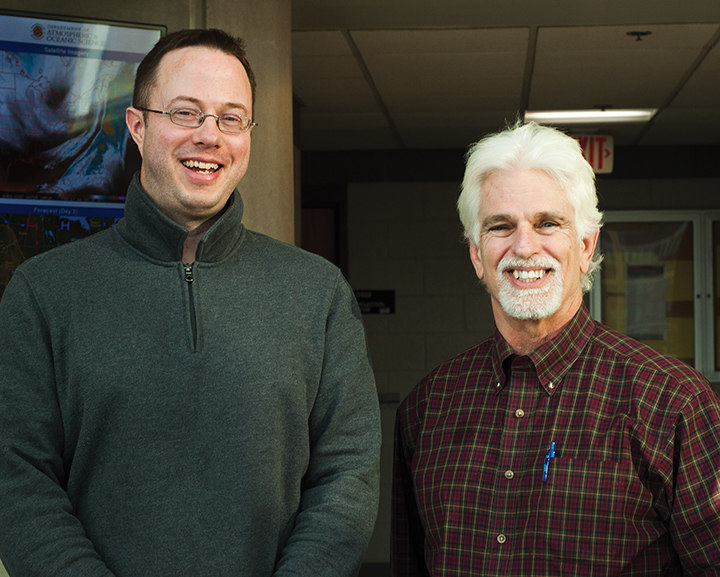New research from the University of Maryland shows that wildfires and farm fires are causing high levels of toxic gas in the atmosphere, even in remote, less industrialized parts of the world.
Two research flight campaigns and satellite imagery provided new information on chemicals in the lower atmosphere above Guam. The results of the study were published in January in the journal Nature Communications.
“What we ended up finding were all of these pockets of ozone, which is an air pollutant, in this remote region … accompanied by a lack of water in the air,” said Julie Nicely, a co-author of the study and graduate student in the chemistry and biochemistry department.
Researchers were surprised to find concentrations of ozone — a greenhouse gas that traps solar radiation in the atmosphere — in this area, Nicely said, and the chemicals found in the air indicated the cause was burning organic vegetation.
Large-scale fires, even in regions far from the Pacific, are significantly affecting the atmospheric composition of one of the most isolated parts of the Northern Hemisphere, said lead author Daniel Anderson, a graduate student in the atmospheric and oceanic science department.
The results “show that high ozone over the remote Pacific Ocean, which has traditionally been viewed as a natural phenomenon, is actually pollution caused by human activities,” Anderson said.
Initially, researchers believed the ozone might have been coming down from the stratosphere, which contains about 90 percent of atmospheric ozone. But further analysis led to the conclusion that the particular cocktail of chemicals observed, including hydrogen cyanide and acetonitrile, had to have been produced by biomass burning around Southeast Asia and tropical Africa, likely from wildfires or farmers burning fields to clear them for new crops, Nicely said.
Levels of carbon monoxide and nitric oxide also ruled out the stratosphere theory, she said, as those chemicals aren’t typically seen in high concentrations at that level.
“We used satellites to visualize air circulation patterns happening in the atmosphere,” Nicely said. “We could observe air rising in the tropics, and as it rises, its gets drier. … We were able to trace the air parcels as they rose into the atmosphere, lost water and moved into the area that we were analyzing.”
This study has important implications for the continued study of global warming, said Dale Allen, an atmospheric and oceanic science researcher who was not involved with the study.
“There will be a close look at the facts of these results moving forward,” Allen said. “And if there can be some sort of modeling, of if you were to vary the levels of biomass burning, you could see how much it would affect the greenhouse warming that is resulting from this.”
Tropospheric ozone is the third-most important human-caused greenhouse gas, Nicely said. And typically when people think of ways to reduce greenhouse gas production, they think of limiting industrial activities in industrialized countries such as the United States and China, she said.
“But this introduces the issue of biomass burning. We knew it was happening, but we didn’t know it was having an impact in the remote parts of the world like this,” Nicely said. “This kind of research shows the importance of addressing biomass burning if we want to really mitigate the effects of global warming.”
This work also further incentivizes developing countries to reduce burning in the tropics, Anderson said, which could also help to improve the health of the atmosphere and people in these countries.



